|
egy.com suggests following articles
|
|
Several of my articles on Garden City were plagiarized word for word by novelist MEKKAWI SAID (winner of the Egyptian State price for literature!!!!) and re-published under his own name in a three-part series in El-Masry El-Youm daily in September 2015. Cheers to our "talented" literature prize awardee. Your pain his gain !!!
|
EGY.COM - GARDEN CITY
The Former American Embassy in Egypt
VILLA CASDAGLI
by Samir Raafat
Egyptian Mail, February 2, 1997
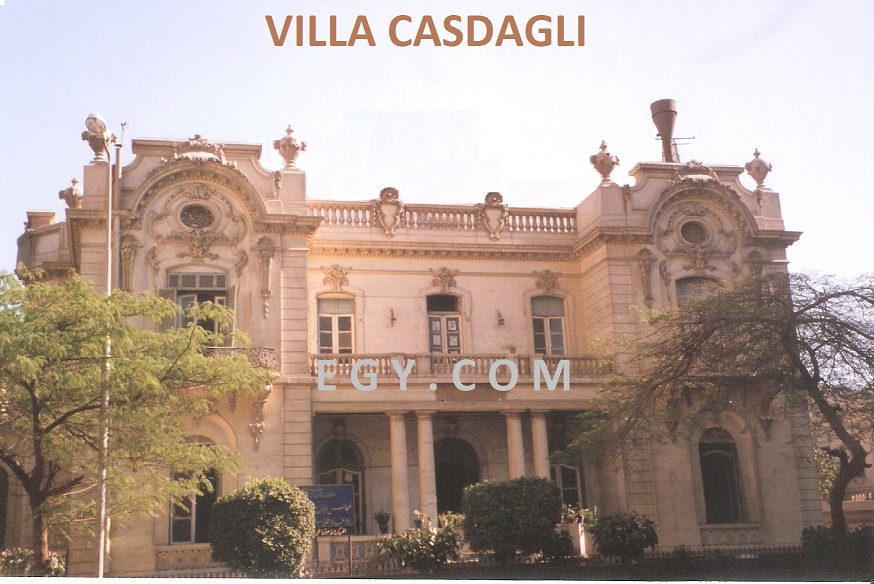
the result of Egypt’s baltagization a listed historic landmark saw its guts scorched, vandalized and looted on 1 February 2013 during what has become routine riots
with the disappearance of Villa Casdagli's inimitable interior, Cairo loses one of its irreplaceable architectural landmarks
the solitary winner here is the villa's latest owner who will no doubt sell this prime real estate to Qatar or replace it with a lucrative high rise
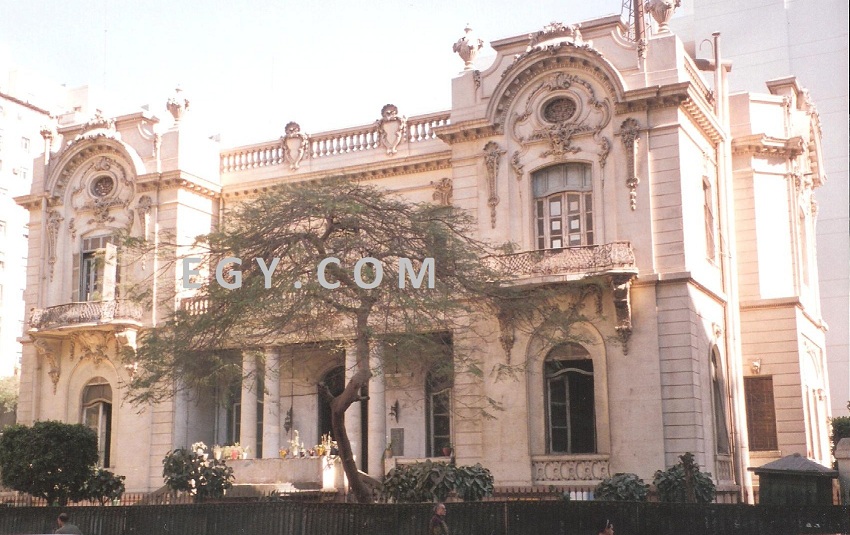
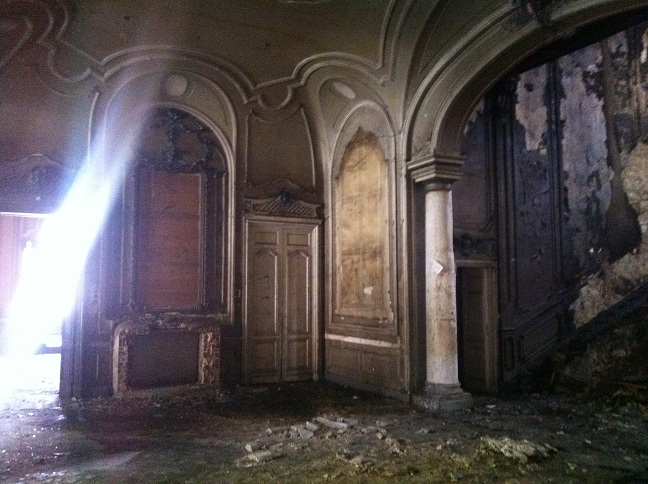
main hall
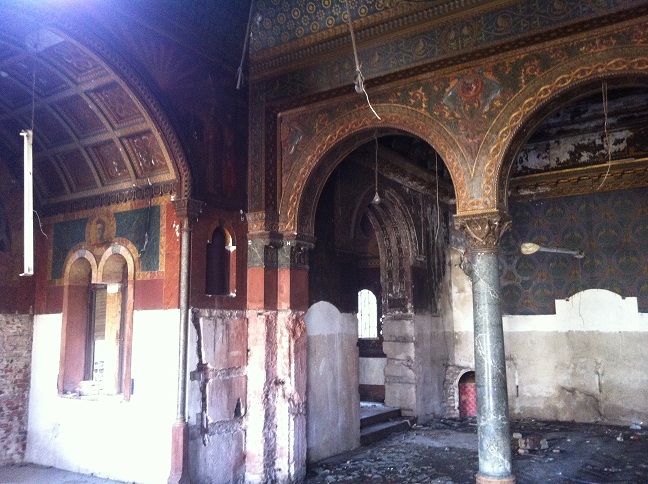
St George salon
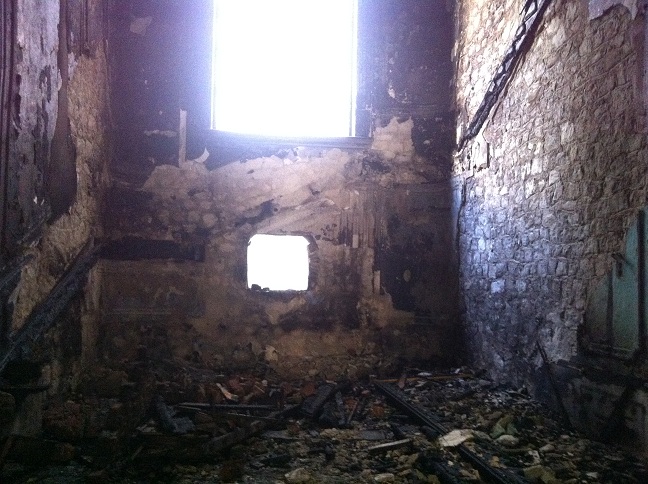
escalier d'honneur
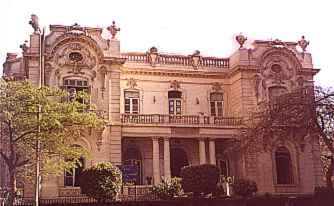
Villa Casdagli now a run-down state school named after Sudanese revolutionary "Ali Abdelatif"
EXCEPT for a cursory daily glimpse of their school's exterior, the children at the girls-only preparatory school located on 1 Midan Simon Bolivar, (not Simone de Beauvoir as the street sign wrongly suggests) never heard of fin de siecle architecture. And yet many such buildings still stand in the heart of their crowded dusty city. Like No. 1 Simon Bolivar, most were turned into state-run schools.
Modeled after Central European hotels particulier in the same genre, Villa Casdagli, now a decaying relic of the past, was built during the first decade of the 20th century by Austrian architect Edward Matasek (1867-1912) reportedly for account of Emanuel Casdagli, a British educated Levantine family of Georgian-Central Caucasia origins as the name would suggest, dealing in the lucrative Manchester trade. [Possibly the house was originally built for banker Felix Suares and, following his death in April 1906, his heirs sold it circa 1909 to the Casdaglis]
Although Kasr al-Dubara is today mainly an hotel, office and banking district, it was once Cairo's top drawer residential quarter and home to several members of the Egyptian royal family who built their palaces there, hence the names Kasr al-Nil, Kasr al-Aali, Kasr al-Dubara, etc. (Kasr meaning palace).
During the first half of this century, Kasr al-Dubara was also the embassy district. When the Casdaglis (Emanuel, later his sons: Alexis and Theodore) were not 'at home' they leased their villa to senior diplomats or diplomatic agencies. In fact, one of Villa Casdagli's pre WW-II tenants was the American Embassy.
It was not uncommon in those days for America to lease premises rather than outright buy them. But in March 1947 things changed, when, acting on instructions of the American State Department, US Ambassador Pinkey Tuck purchased part of the present day embassy compound. This was to become the first ever Egyptian real estate property owned by the American government.
Situated at No. 5 Kasr al-Walda Pasha Street (later Amrika al-Latinia St.), Pinkey Tuck's new quarters were a stone's throw from Villa Casdagli. Like the latter villa, it too belonged to a wealthy merchant-businessman, this time a Syrian called Alexander Chedid Bey.
Over the years and as American interests in Egypt expanded, the State Department purchased the contiguous properties including Villa Rolo which had also been built by Matasek. Turned into the American Library it was partly burnt down during the 1958 riots. Villas Chedid and Rolo were eventually pulled down, along with the apartment building which had replaced Villa Ades, to accommodate the impregnable American fortress which now occupies the entire hexagon.
Behind Villa Casdagli at No. 9 Sheikh al-Arbaein, stood until recently Villa (Polychroni) Cozzica which belonged to a wealthy Greek family by the same name. For a long time the Cozzicas held the monopoly of distilled alcohol in Egypt.
During the years leading up to WW2 and much to the chagrin of the wary British diplomats holed up in their large quarters two blocks away, Cozzica' neighbors the Kyriazi's at No. 7 leased their Cairo residence to the German legation. The last high ranking German visitor to call was Reichsminister of Propaganda Dr. Joseph Goebbels in whose honor a dinner was held at the German Legation on the night of 6 April 1939.
VILLA CASDAGLI’S ARCHITECT
In his younger days, Villa Casdagli's architect worked and apprenticed for a number of famous Austrian architects including Joseph von Wieser, Arnold Lotz, Ferdinand Fellner and Herman Helmer. It was most probably at the recommendation of Max Herz Bey, the Khedivial court's rising architect, that Matasek took part in the design of the Egyptian display for the 1892 (3?) Chicago World Fair. This was to be in the shape of a Cairo streetscape.
From Chicago, Matasek traveled to Egypt where he joined the cabinet of Pattigelli Freres and later that of Maurice Cattaui Bey. Henceforth, Matasek occasionally crossed paths with his Austro-Hungarian compatriot and mentor, Herz Bey. By now Herz was firmly entrenched in the architectural annals of Egypt having built, restored and written about, several of Cairo's most distinguished monuments including the Islamic Museum and the Credit Foncier Bank on Abdelkhalek Sarwat Street. Both Herz Bey and his former protégé were members of the Comité; de Conservation des Monuments de l'Art Arabe.
Once in Egypt, Matasek designed several of the city's commercial and residential landmarks. Amongst his more famous works is the (listed) Jewish Synagogue, No. 17 Adly Pasha Street in downtown Cairo. Another is the Austro-Hungarian Rudolf Hospital in the now popular district of Shubra. There is also the German School of which parts were pulled down only last week by al-Ahram, the state-owned newspaper and publishing giant.
Matasek also took part in the design of Credit Foncier's Cairo headquarters, today the Arab International Bank.
Some of Matasek's minor works can be found in the Cairo suburb of Maadi. These include Villa Austria and Matasek's own house which he never occupied in view of his unexpected death during its construction. His fasswerk style villa was pulled down in 1995, weeks after the American Embassy (it's last owner) sold it to a developer.
Perhaps friends of Cairo's landmarks within the business community would like to participate in the “Adopt A Monument Program” starting with Villa Casdagli. Suffice to reinstate the villa’s inimitable Byzantine hall so that the restorer will be guaranteed a place in heaven right next to Saint George who is so well depicted in both the Villa’s celestial ceiling and the hall’s extraordinary cloister. The positive fallout from such an effort would be enormous striking a rich chord in this highly visible section of Cairo where it counts most. It would also be perceived as part of the city's effort to repair the moral and physical damage caused by decades of neglectful municipal administration and the onslaught of developers.
In the case of Villa Casdagli an appropriate and highly visible plaque could be appended on its exterior evidencing this was once the American Embassy. Another plaque would indicate that the restoration of this hotel particulier to its formal splendor was made possible by the generous donations of e.g. Philanthropists & Co. In turn, the government, which suffers from a very serious image problem when it comes to saving our architectural cultural heritage, will have its chance to turn over a new leaf and show that it really means business.
Midan Kasr al-Dubara (now Simon Bolivlar) could become one of Cairo's most creditable landmarks bringing together the great liberator of South America, a restored Central European hotel particulier, the Mosque of Omar Makram where Egypt's rich and famous are chronically mourned, several infitah banks, the Semiramis Intercontinental Hotel and the dreaded Mogamaa building, a potent symbol of Egypt's titanic bureaucracy. A remarkable juxtapose if there was ever one!
Reader Comments
|
Subject: Casdagli family
Date: Tue, 15 May 2001 13:28:19 +0100
From: Vassiadis, George
Just a quick note to thank you for another interesting article. Earlier this year I was in Cairo, and my room in the Semiramis overlooked the Casdagli house. I was surprised to see the original--if somewhat battered--Baroque-style paintings still hanging in the entrance hall!
In your table of the descendants of Emmanuel Casdagli you appear to have made a mistake: Valissa Casdagli Gordon is the niece, not daughter, of Emmanuel and Edith Casdagli. I have been gathering genealogical information about a number of Greek-Egyptian families for many years now, and have in the course of my research come across information about the Casdaglis. I can send this to you if you wish.
On another note, references in the various Cairo directories show that from the 1920s until the 1950s the Cozzika house was located at No. 9 Shari El Sheikh Arbein, and that in the 1930s the German Legation was at No. 7. Surely they are not one and the same thing? If I am not mistaken, when I was in Cairo earlier this year I saw an old house still standing at No. 7. Is it the former German Legation?
All the best,
George Vassiadis
Subject: Kasr el Doubara
Date: Tue, 24 Apr 2001 06:36:31 EDT
From: PatrickWGordon@aol.com
Dear Mr Raafat
My mother has asked me to send you a letter in response to your article.
Please see below.
Patrick Gordon
24 April 2001
Dear Samir
Re: Kasr al-Dubara
I have read your article featured on the internet taken from the article in the Egyptian Mail 2 Feb 1997. I wonder if there has been any response other than that from my young cousin Christopher Casdagli.
My great grandfather Emanuel Casdagli bought the villa at No 1 Midan Kasr el Doubara in the early 1900's, probably about 1911. This villa had been the British Agency and was occupied by Lord Cromer and then Sir Eldon Gorst. The Casdagli family did not build the villa. I quote from my uncle's book.
"I arrived in Cairo in the early autumn of 1927 and joined my father, who was living more or less permanently in Egypt, and my uncle Demetrius, at the family home at 1 Midan Kasrel Doubara. In the early 1900's this house had been the home of the British High Commissioner Sir Eldon Gorst and when he moved to an even more stately home. The Residency" not very far away my grandfather had been able to buy the house. Kasrel Doubara, as we called it, after the Midan which it faced, with the Khedivah Mothers Palace gates on the opposite side, which was built of large blocks of sand coloured stone and with its large wrought iron gates was a most imposing site."
[Note from author of above article: Sir Eldon Gorst succeeded Lord Cromer in 1907 and like his predecessor, lived in the British residence where the British Embassy is today. The title of British High Commissioner did not come into effect except after 1914. Heretofore, the title of consul-general was in use.]
In 1931 my grandfather Theodore Casdagli lived there for sometime. I also lived there for a time with my parents and brother. During the Second World War it was let to the U.S. government to use as their embassy. The Casdagli family sold it in 1942.
I have recently returned from a visit to Cairo where we were welcomed into Kasr el Doubara. I remember the house well from my childhood and was sad to see it in such a poor state of repair. I was informed that there are plans to close the school and refurbish the house. Is this so? Naturally the family, now all in the U.K would be most interested to learn of any future plans for the house.
Yours sincerely
Valissa Gordon (nee Casdagli)
Subject: Villa Casdagli.
Date: Fri, 9 Feb 2001 13:46:19 -0000
From: HAP Moorgate PP - HPS
Dear Samir,
Here at my office in London I typed in 'Casdagli' to see what would come up. I found your article, very interesting. I have always seen photographs of Kasr al-Dubara, but only in black and white. Great to see one in colour. I hope to visit Cairo one day and see it in the flesh, so to speak! My father [David Seymour Emanuel Casdagli, born September 24, 1934] lived in Villa Casdagli until the age of four when he returned to the family house in Mancher, Kersal Hill.
I have many press cuttings from the 1920's and 1930's of the house. Many from 1933, when my grandparents married at Cairo [St. Mary's pro-] Cathedral, and afterwards had a party for 400 at the house. My Grandmother was the daughter of Lord and Lady George Seymour [of Wellingore, Lincolnshire] and the niece of the Marquess of Hertford so at the time the house appeared in the press in France, Italy, UK, Cairo etc. [Hon. Edith Patricia Mary Seymour Born 24 September 1913 married 23 November 1933 Emmanuel eldest son of Theodore Casdagli. Marriage Diss.1972]
At the age of 25, I can only hear the stories of the fun that was had in Cairo in "the good old days". If I can ever provide you with any Casdagli or Villa Casdagli information, I would be delighted.
Best Wishes,
Christopher Casdagli
Dear Samir,
I greatly appreciate your articles and contribution to History and the effort of preserving the cultural heritage of Egypt.
In relation to the following villas, they belonged to Hephestion Epaminondas Kyriazi not to the Cozzikas (though our families were friends) as you seem to indicate in your article.
The Villas situated No. 7 Sheikh al Arbain street and No 9 Sheikh al Barakat Street belonged to Héphestion Epaminondas Kyriazi (cf. Kyriazi Frères). The No 7 Sheikh al Arbain was first leased to Mohamed Mahmoud Pacha, Minister of Finance of Egypt and then to the German Legation in Cairo.
Hephestion had a son, Alexander (better known as Alec), my uncle, and a daughter, my mother Artemis-Hélène (better known as Dayana). His wife was Despina Georgacopoulou whose father Démosthéne Georges Georgeacopoulos and mother (born Vafiadis) were the initial owners. These three families Kyriazis, Georgeacopoulos and Vafiadis were in the tobacco and cigarettes industry, among the first (Vafiadis 1870, Kyriazi Frères 1873).
All the very best
Alexandre Kyriazi-Cordahi

|
Email your thoughts to egy.com
© Copyright Samir Raafat
Any commercial use of the data and/or content is prohibited
reproduction of photos from this website strictly forbidden
touts droits reserves





